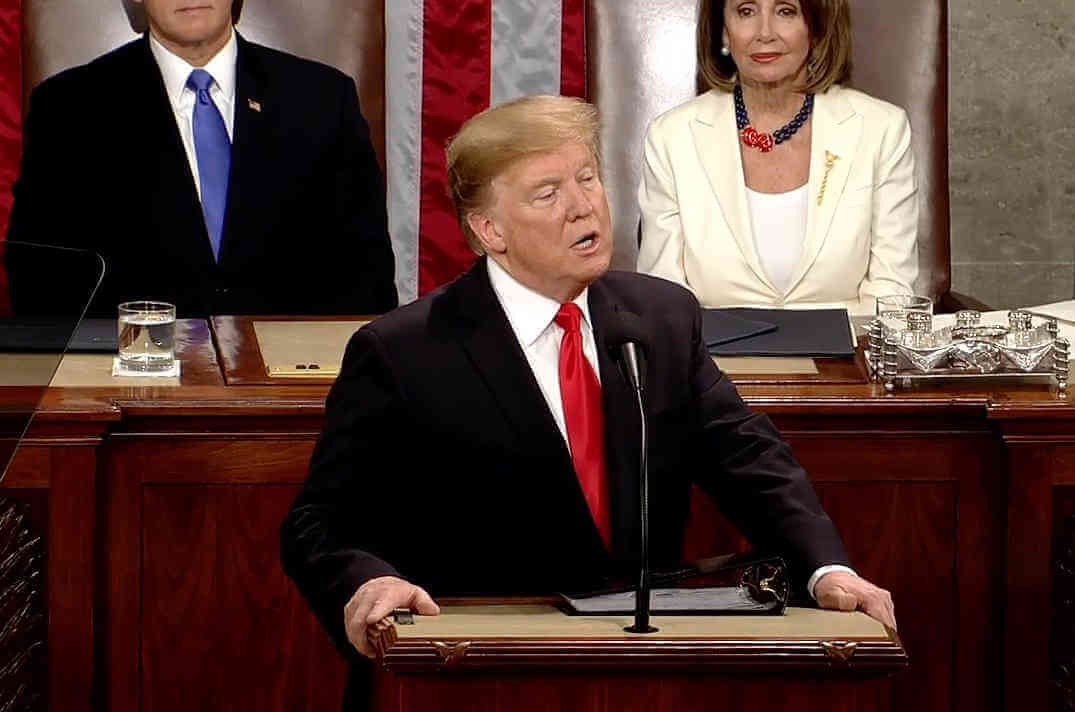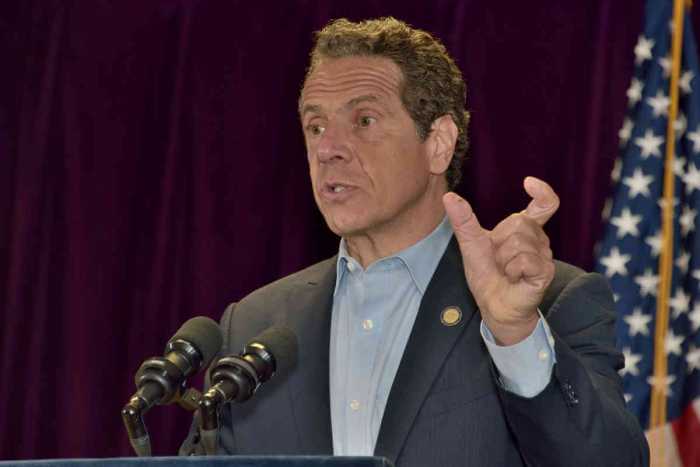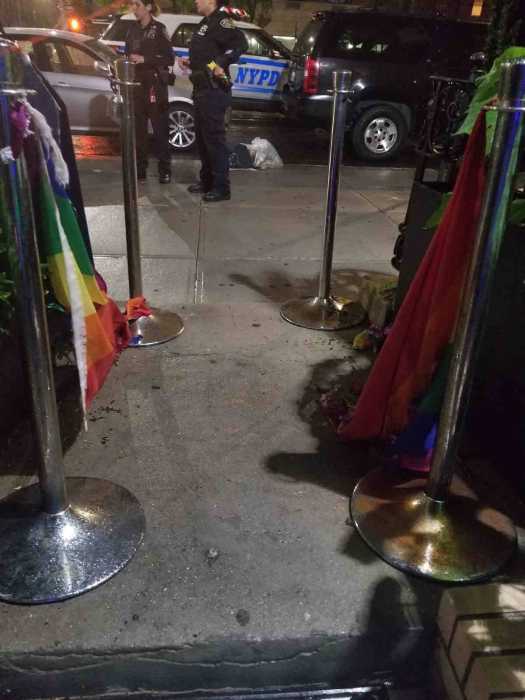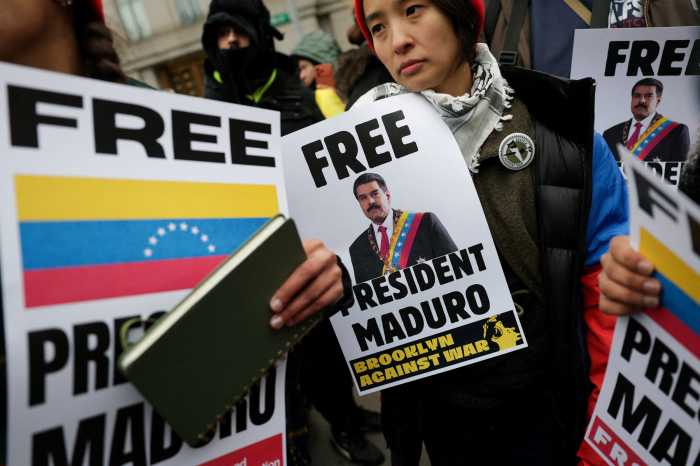HIV/ AIDS advocates, as a group, are far from convinced, but some are nonetheless willing to listen to President Donald Trump’s new goal of eradicating the epidemic by 2030 — as long as he sticks to it.
Many, however, argue that his administration’s hostility toward communities most affected by the epidemic make his pledge hollow.
Trump unveiled the new plan during his State of the Union Address on February 5, citing “scientific breakthroughs” that “have brought a once-distant dream within reach,” but initially offered only the vaguest indication about how he would approach the ambitious goal.
The Department of Health and Human Services followed up one day later by rolling out a two-page outline of the plan, which encompasses a multi-year program in 48 counties, Washington, DC, San Juan, Puerto Rico, and seven largely rural Southern states where HIV infections warrant the strongest attention. HHS said it is utilizing “expertise, technology, and resources” necessary to implement four main strategies — diagnose, treat, respond, and protect — in an effort to reach the goal.
The plan calls for a 75 percent reduction in new infections within five years and a 90 percent reduction in 10 years. The department claims it will take a local approach through what is being called HIV HealthForce, which will organize teams in each jurisdiction dedicated toward achieving the goal.
“We’re cautiously optimistic about this plan,” said William McColl, who serves as the vice president for policy and advocacy for AIDS United, a national DC-based nonprofit dedicated to fighting the epidemic in the US.
McColl said the plan echoes a similar roadmap outlined by the Act Now: End AIDS Coalition, an effort managed by AIDS United — with input from the HIV, public health, and reproductive health communities — to end the epidemic by 2025.
“It’s a goal that we’ve actually worked towards,” he said.
But Charles King, CEO of Housing Works, another AIDS nonprofit, said Trump has “kicked over a hornets’ nest” with his new plan and pointed to the existing roadmap mentioned by McColl.
“Compared to the community’s six-year plan, the Trump administration’s 10-year strategy will waste time, money, and lives,” King said. “We must see an immediate stop to attacks on Affordable Care Act, human rights, sexual and reproductive rights, immigrants, and all the communities most impacted by the epidemic.”
Despite his “cautious optimism,” McColl elaborated on his own serious concerns about the Trump administration’s ability to accomplish such a goal when it has shown hostility toward marginalized groups, including those most affected by the epidemic.
The current plan, he said, is also strongly “medicalized” and needs to be broadened to address issues such as stigma and barriers to access and care.
Perhaps most importantly, McColl stressed the need for the administration to reach out to affected communities — an area in which he said Trump has underperformed.
“They’re going to have to figure out a way to build trust,” he said. “It’s not just trust of the Trump administration, but it’s government-wide distrust.”
Kelsey Louie, the CEO of Gay Men’s Health Crisis (GMHC), the earliest advocacy group to provide resources and assistance for those affected by HIV/ AIDS, called on Trump to follow through on his pledge and work with relevant organizations.
“We’re skeptical,” Louie said. “But, in the interest of our mission, we want to believe this is possible.”
The AIDS Institute, a national nonprofit that strives to promote social change via public policy, research, education, and advocacy, offered the most upbeat take on the president’s plan. The group’s deputy director, Carl Schmid, who recently became co-chair of Trump’s newly reconstituting Presidential Advisory Council on HIV/AIDS — the president had earlier dismissed all its members — called the goal a “bold step” that will “translate into fewer HIV infections.”
“Under the president’s proposal, the number of new infections can eventually be reduced to zero,” Schmid added.
But Sean Strub, who founded POZ magazine several years after having been the first openly HIV-positive to run for federal office in 1990, struck a far different tone — and he sees ulterior motives attached to the president’s stated goal.
“Pay no attention to what words come out of the mouth of the lying vulgarian in the White House,” Strub said in an email to Gay City News. “The subsequent ‘details’ from HHS don’t really contain anything new except a promise of an unspecified amount of new funding. What they only seem interested in is more aggressive testing (with even fewer consent protections) and molecular surveillance, both of which are problematic… They don’t have the slightest idea how to combat stigma and refuse to listen to those who do. They aren’t the least bit interested in the inherent racism and sexism and transphobia that truly drives the epidemic.”
Strub, like Louie and McColl, noted that a roadmap focused on ending the epidemic already exists.
“There’s nothing new here, except possibly a few bucks more for testing and surveillance strategies that pose greater risk to human rights,” he said.
New York, under Governor Andrew Cuomo, is in the midst of working toward a goal of ending the epidemic in the state by 2020, based on strategies to keep those who are positive on treatment to eliminate their infectiousness and to enroll negative people from high risk groups in pre-exposure prophylaxis (PrEP). Officials claim the state is on pace to reach that goal on time, though Doug Wirth, CEO of Amida Care, which provides health plans for more than 7,000 New Yorkers on Medicaid, noted in a recent interview with Gay City News that statistics show that infections are not dropping here as quickly as before.
In a New York Daily News op-ed following Trump’s announcement, Wirth noted many ways in which the president has hurt the communities most affected by the epidemic: He has cut programs for those in poverty, gutted the Presidential Advisory Council on HIV/ AIDS for more than a year, and has rolled back LGBTQ rights, among many examples. He said that Trump could learn a great deal by looking at his home state of New York.
“If the President is serious about this commitment, he must follow New York’s lead: implement policies that address health disparities and promote universal access to health care,” Wirth wrote.
Many others share Wirth’s concerns. Doubts over the administration’s sincerity surrounding the plan are rooted in the way Trump has taken others steps that are hobbling the effort to fight the epidemic. He pulled funding from a major HIV research lab in December, redirected funds from the Ryan White AIDS CARE Act to pay for his migrant family separation policy, and, among other actions, proposed to cut back on PEPFAR, the presidential initiative to address HIV/AIDs on a global scale.
Still, if carried out properly, McColl believes, it would be possible for this administration to help the nation reach an end of the epidemic. That, he said, would require Trump to stay true to his word and give the epidemic the attention it requires.
“If there are enough resources, we could do it in five years,” McColl said. “The roadmap we put forward is in coalition with 250 other organizations. That actually had modeling to do it by 2025.”



































